“Perplexity is the beginning of knowledge.”
~ Khalil Gibran
Quick Answer: Yes, But It Requires Careful Choices
I spent most of my childhood hating seafood, despite the fact that I grew up on Cape Cod, where my family had access to fresh fish year-round. A staunch Catholic, my mother served fish every Friday, and I would swallow my small piece with a bug gulp of milk, doing my best not to taste it. Fast forward to adulthood, when my palate became less picky and I tried seafood again with an open mind. I found that I could tolerate it, but didn’t love it, so I didn’t seek it out. Then, I started the paleo diet, where everyone from the Paleo Mom to Chris Kresser recommend eating copious amounts of fish. I took their advice, started eating it more regularly and came to like the taste and most of all, the ease of preparation. It cooks up quickly and makes an easy, nutritious weeknight meal.
So, what’s the problem? When it comes to healthy choices, seafood is a big grey area. There’s heavy pollution in our oceans and questionable practices in fish farming. Fish populations are on the decline, with some species in danger of disappearing altogether. Shellfish are the filters of the sea, and they’re also one of the top food allergens. Farmed fish are often fed the same grains and drugs as CAFO meats, and being more prone to illness, they can infect and kill natural fish populations. And don’t even get me started on seafood fraud. So, what’s an informed consumer to do? I can buy meat and produce from local farmers I trust, but I no longer live on the coast. So, when it comes to seafood, I’ve simply been buying whatever’s on sale, and while that’s great for my budget, it might not be great for either the planet or my health. So, I’ve decided it’s time to research this issue in depth for myself, clear the confusion, and learn where fish really fits in a healing diet.
Sustainable Seafood
It’s hard to imagine the ocean running out of fish. It sounds crazy, yet that’s exactly what’s happening. Overfishing happens when seafood is caught faster than it can reproduce, and it’s been going on since the 1950’s. The fishing industry changed, from small independent fishing boats to large industrial operations. The big boats use very aggressive measures to catch as many fish as possible. The result? 90% percent of all large fish – tuna, shark, swordfish, cod and halibut – are gone. So, the big boats are moving to the next fish down the ladder. Scientists predict that if current trends continue, the fishing industry will collapse altogether by the year 2050.
Shrimp: a worst case scenario. Trawling, often called “fishing with bulldozers”, involves dropping a weighted net onto the ocean floor and pulling it for miles, picking up everything in its path. In addition to damaging the ocean floor, 80-90% of what’s caught in the net isn’t shrimp, but fish, sea turtles, seabirds, dolphin and seals. This is called bycatch and when the nets are pulled up, they’re thrown back into the sea. Unfortunately, many die in the process. Wild Pink Oregon Shrimp are the exception to this role. Closely regulated for sustainability, they are one of the only shrimp fisheries certified by the Marine Stewardship Council. That’s the shrimp I buy.
So, what can we do? Consumers drive the marketplace. If we make sustainable choices, so will the fishing industry. If you have a Whole Foods near you, they received the highest rating from Greenpeace for supporting ocean sustainability. You can also use these online resources: the Monterey Bay Aquarium Seafood Watch and Environmental Defense Fund’s Seafood Selector. Both websites offer a list of best and worst choices and also let you search for guidance on a particular type of seafood. There’s even a smartphone app. However, keep in mind that they only care about the ocean’s health, not yours, so start with sustainability recommendations and keep reading to learn more about seafood and your health.
Fish Farming
If the oceans are overfished, then fish farming must be the perfect solution, right? Not so fast. It turns out that most fish farms are as bad for the environment as overfishing, and involve practices that are harmful to your health as well. The fish are crowded together, are prone to illness and infection, receive antibiotics and hormones, are fed GMO grains (which isn’t their natural food and throws off their omega 3:6 balance), and waste/sewage output is high. While some farms have moved inland to try to protect the oceans from the negative impact, the overcrowding/high medication/unnatural feed problem remains.
Needless to say, this is neither a sustainable nor a healthy fish to eat. Unless you have access to one of the few fish farms run differently (like Australis), avoid farmed fish altogether. For your reference, the following fish in the grocery store are almost always farmed: tilapia, catfish, trout, and salmon (unless marked as wildcaught).
Bivalves: A Special Case
Bivalves are shellfish with a hinged shell: scallops, mollusks, clams, oysters and abalone. They’re nutrient-dense food choices, and they also lend themselves very well to farming because they don’t require any feed, gathering their food naturally from the water in the form of plankton. They aren’t prone to illness, so there’s no need for medication. They naturally cluster together in large groups, so overcrowding isn’t stressful. And they are excellent filters; they actually clean the water, absorbing any toxins into their bodies. Some salmon farms are starting to use bivalves to clean their farm’s pollution. They can then sell the bivalves as well as the salmon, doubling their profit. It’s that last fact that is my only concern. While I’m happy that the ocean will be less polluted, I have no desire to eat toxin-filled bivalves. States do monitor water quality for high levels of mercury and pcb’s. However, they don’t test for things like antibiotics, hormones or the sewage common to salmon farms. Bivalves from clean water are a healthy, sustainable choice. Bivalves from dirty water are toxic. Be sure of the water source before making a purchase.
What About Mercury?
Mercury is a naturally occurring element that exists in small amounts in all living things. However, industrial pollution has increased the level of mercury worldwide, especially in our oceans. While all seafood contains some mercury, the bigger the fish, the greater the amount. This is because the big fish live longer and eat the little fish, absorbing more mercury in the process. This graphic from the Sierra Club shows mercury levels, from low to high, in different types of seafood. (Here’s a text list showing the same.)
Does that mean we should avoid seafood altogether? No. Chris Kresser has done a lot of research in this area, and it’s actually a bigger risk to avoid seafood. We need the unique omega 3’s that seafood provides. The question is whether we should only eat low-mercury fish, or whether all seafood is safe to eat? Among scientists, opinions vary:
- Dr. Nicholas Ralston is a scientist who specializes in the the field of mercury toxicity. He says that the selenium naturally present in seafood protects against mercury toxicity. How? Selenium is an incredibly important mineral in our bodies, acting in support of the antioxidants that keep us healthy. The problem with mercury is that it attaches itself to selenium, inactivating the selenium in the process. Mercury toxicity only happens when you take in more mercury than selenium. If you take in more selenium than mercury, there is still plenty of selenium available to do its job and keep you healthy. Seafood is unique in that the vast majority of ocean fish contain more selenium than mercury, and are therefore safe to eat. The only ones to avoid are shark, whale and swordfish. Dr. Sarah Ballantyne agrees with this position.
- Dr. Chris Shade is another expert on mercury toxicity, and he disagrees with Ralston. He says that individuals vary on their sensitivity and absorption of mercury, depending on a number of factors: genetics, immune sensitivity to mercury, and the function of our detoxification pathways. Selenium doesn’t always provide complete protection. That said, he doesn’t tell people to avoid all seafood. Instead, he recommends consuming low-mercury seafood only.
So, what’s the takeaway? Everyone agrees that low-mercury seafood promotes health. The ability to tolerate higher-mercury fish will vary from person to person.
Freshwater fish are little more complicated. The mercury-selenium ratio varies, depending on the body of water. So, the same type of fish from one location might be healthy, and from another location, might be toxic. Before eating freshwater fish, find out where it was caught, and check the EPA website to see if there is a health advisory for that body of water.
What About Radiation from Fukishima?
In 2011, an earthquake caused a nuclear meltdown at the Fukishima power plant on the coast of Japan. Naturally, many people became concerned about radiation contamination of ocean seafood. However, studies show there is no need to be concerned. The amount of radiation currently found in seafood is less than the natural radiation contained in bananas. One thing most of us don’t realize is that radiation occurs everywhere on Earth. The problem isn’t exposure; the problem is overexposure. While the people near Fukishima when the event occurred were definitely overexposed, those of us elsewhere on the planet aren’t at risk from radiation overexposure through seafood.
The Canned Tuna Conundrum
If you’re anything like me, canned tuna was a big part of your childhood, in the form of sandwiches, salads and casseroles. Today, it’s one of the few canned foods I still buy, because my brand has only 3 ingredients: tuna, sea salt and water. However, not all canned tuna is created equal.
Large commercial companies (like Starkist and Bumblebee) use unsustainable methods (longline) to catch dwindling populations of big tuna. They only haul their catch on board once every 24 hours, and some of the omega 3 fatty acids are depleted during the wait. They then cook the tuna twice (once prior to canning and once in the can), depleting the omega oils even further. Lastly, they add flavoring and preservatives prior to sealing.
Small ecological companies (like Wild Planet and American Tuna) use sustainable methods (pole & troll) to catch robust populations of younger, smaller tuna. They haul each fish on board immediately and fresh-freeze it to preserve its omega 3 fatty acids. They only cook their tuna once (in the can) preserving the omega oils even further, and the companies use no additives. This makes a huge difference: omega 3 content in 3 ounces of tuna caught and canned this way contains 705 mg omega 3 fatty acids. In contrast, Starkist only contains 230 mg. Avoid the large commercial brands, and buy tuna from one of the smaller ecological companies. They are more expensive, but you get far more nutritional bang for your buck.
Why Seafood Is Essential To Our Health
We hear about the importance of omega 3:6 balance all the time, but why should we care? The modern American diet contains 20 omega 6 fatty acids for every 1 omega 3. The hunter-gather diet contained a ratio of 1:1. That’s a huge difference, and modern health (or lack thereof) shows it. High omega 6 consumption is linked to all the inflammatory diseases: heart disease, cancer, diabetes, autoimmunity, psychiatric disorders and more. High omega 3 consumption has the opposite effect, protecting against those same diseases, and easing the symptoms if the disease is already in effect.
To reach a healthy balance, the goal is to stop eating foods that are high in omega 6 (like refined vegetable oils), and start eating foods that are high in omega 3 (like seafood). Here’s a chart that shows omega 3 content of common seafood. You’ll notice there’s a big variation, but if you look closely, you’ll see that every kind of seafood has more omega 3 than omega 6, so even the lower-omega seafood is beneficial to you health:
But that’s not the only reason to eat seafood. Fish have a unique form of protein that’s easier to digest than others. This can be especially helpful to people with digestive trouble, a common symptom of autoimmunity. And some seafood contains vitamin D, a nutrient that is essential to our health, but rarely found in food. Herring, oysters, salmon, halibut, sardines and mackerel all contain high amounts.
Seafood Fraud
So, now we know how to choose the type of seafood that benefits our health, and protects our oceans from being overfished at the same time. Enter a new problem: food fraud. I’ve written about this before, regarding olive oil. Greed without ethics causes some businesses to substitute cheap products for the ones that are in high demand. With the overfishing crisis, it’s not surprising that seafood fraud tops this list. 84% of the seafood eaten in the US is imported, and only 2% is inspected by the FDA, making the switch very easy to do.
With DNA sampling, 14 US cities were investigated to determine the rate of seafood fraud, and they found that seafood was mislabeled between 18-56% percent of the time. Here’s a map, with details.
So, what can you do? Know your source. The same way knowing your farmer allows you to trust the meat and produce you buy, knowing your fisherman ensures you won’t be the victim of seafood fraud. Seafood CSA’s are becoming more and more common. To find one in your area, ask friends and local farmers. You can also do a google search for your region. If there are no seafood CSA’s in your area, Sea to Table is a trusted online company which buys directly from sustainable fisheries and traces the origin of every product to eliminate fraud. Their products are expensive, though. You can also buy canned seafood from trusted companies like Wild Planet, which also source sustainable seafood and ensures each product is the real thing.
Summary: Top 5 Healthy and Sustainable Seafood Choices
- Wild-Caught Alaskan Salmon
- Wild-Caught Pacific Sardines (US or Canada)
- Wild-Caught Atlantic Mackerel (US or Canada)
- Wild-Caught Young Albacore Tuna (troll or pole-caught, from the U.S. or Canada)
- Oysters (also rich in vitamin D)
These are all high in omega 3, high in selenium, and fished sustainably
Delicious Recipes & Resources

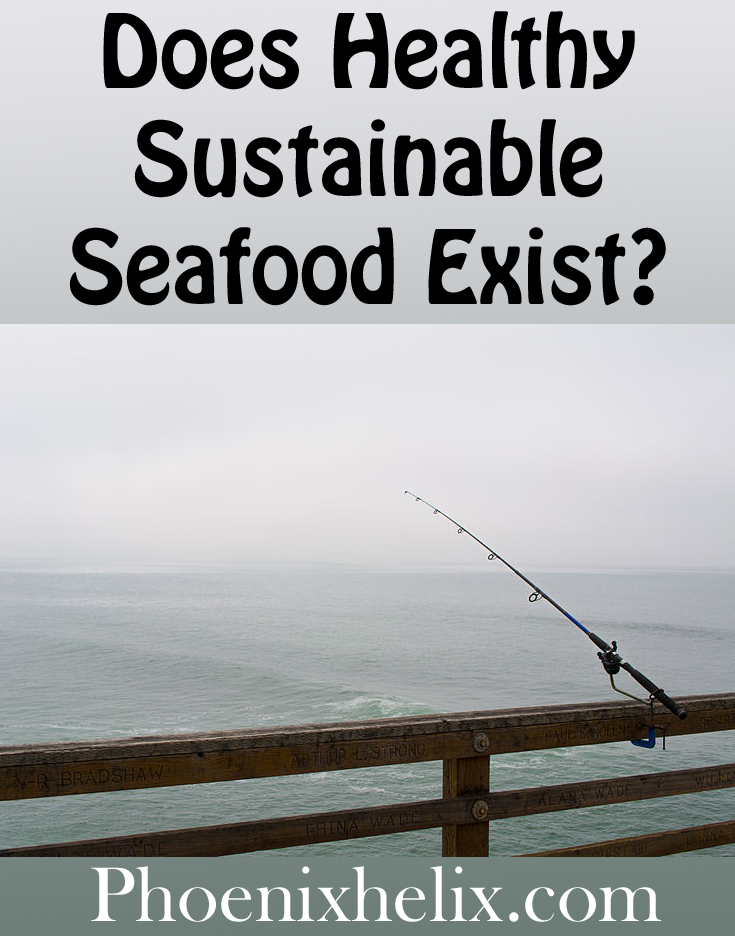

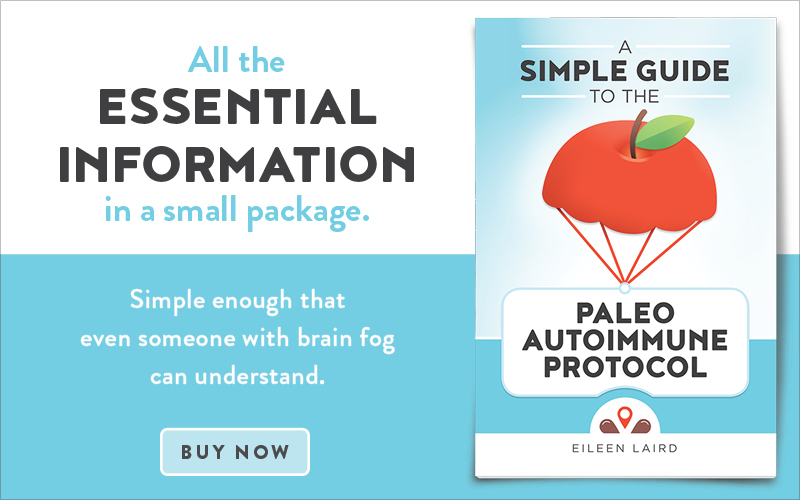

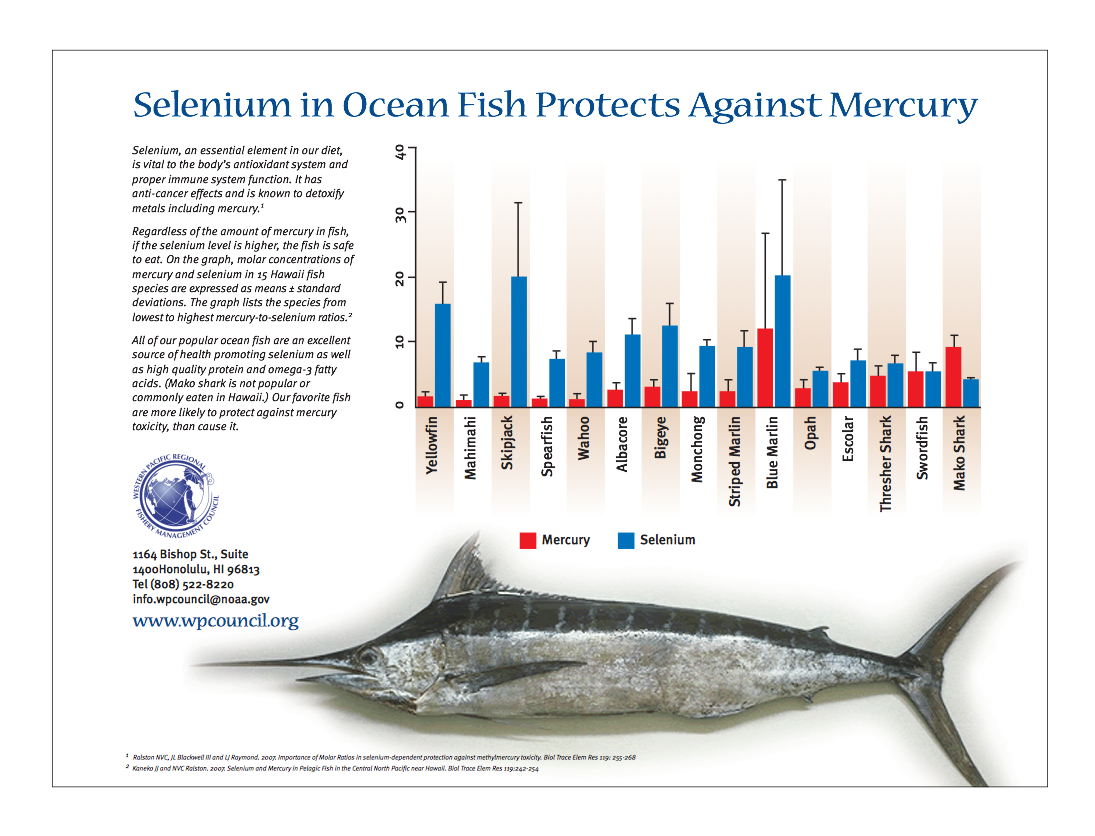
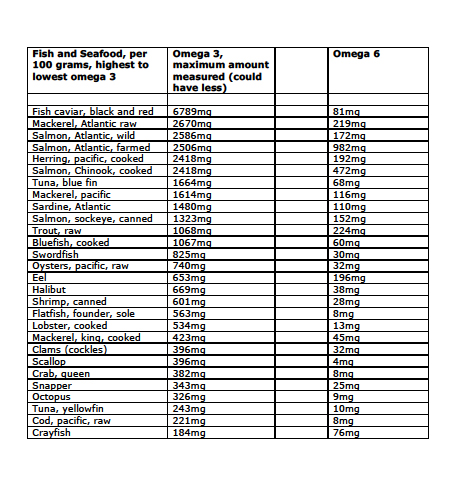



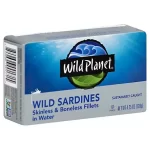
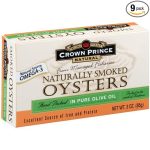
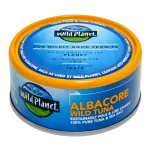

The only salmon I trust is the wild caught canned salmon from the health food store. $8.99 for a half can, expensive but I carry a can with me at all times as a “safe food!!”
Wild-caught salmon is a great choice.
Is there no other way to get the Health benefits fish provide from another source (like not an animal?)
It seems to be there are “sustainable” choices to be had now, but if everyone eats those, demand will go up and those choices will be over fished, again and again so the ever-so-important healing of the ocena will never be allowed.
Todd, the foundation of sustainable fisheries is that they limit supply, so even if demand went up, fishing wouldn’t. I think if we start valuing the ocean enough to insist that all seafood be sustainable, fish farming has to be part of the solution, but it needs to be done much differently than conventional fish farming is done today. Australis – the sustainable fish farm I mention in the article – is an excellent role model of the future of fish farming. If you’re a vegetarian who won’t eat seafood, your closest substitute would be algae oil. However, all of the algae supplements I’ve seen contain a lot of additives, so I haven’t found a brand I could recommend.
Thanks Eileen,
I looked up that fish farm – sure looks like a nice place (they even made the processing plant look pretty).
Fortunately I found lots of nuts, seeds, and oils have plenty of Omega 3 at various 3:6 ratios. for example one tablespoon of Chia seed contains 61% daily value of Omega 3 at a 3:1 Omega 3:6 ratio while Hemp Seed oil has a 1:3 Omega 3:6. So there are plenty of ways to get a nice 1:1 ratio of Omega 3 and Omega 6. YaY! I won’t have to mess around with Algae labels.
Todd, the problem is the conversion. Our bodies need DHA and EPA, and the plant sources of Omega 3 – like those you mentioned – are ALA. ALA needs to be converted by the body, and very little actually gets converted (less than 5%). This article goes into more detail – https://chriskresser.com/why-fish-stomps-flax-as-a-source-of-omega-3/
Ah ha. Of course it’s not so simple. Thanks for the info and resources Eileen. Keep up the good work!
Wow…great article!! And thanks for the Vital Choice recommendation/discount.
Agreed that this was great info, I put the essentials in my I-phone to have when ordering -shopping-eating out so I don’t have to rely on my poor memory!
That is an awesome idea.
I agree that it does get overwhelming. I too read through some of Chris’ post on this and was glad to see that he is not worried about Pacific fish. We don’t eat that much so I am choosing not to worry as well.
Thanks for posting at Healing with Food Friday.
Thanks for sharing the info on tuna. That is one fish I do buy. Gonna look into the brands you mentioned as being better choices. And wow, that list of omega 3 to omega 6 ratio! I see why fish is important in our diet. 🙂
Especially since most other foods have the reverse ratio. Fish are definitely superfoods.
Thanks for another well-researched eye-opener.
My food co-op stopped selling fresh tuna because their source wasn’t sustainable. Now they’re trying to find some that’s sustainable. In the meantime, I’ll probably check what’s available canned.
It’s sad what’s happening to seafood practices.
Thanks for the compliment: “well-researched eye-opener.” So many of my articles open MY eyes during the research, too. I’m sorry you lost your tuna connection, but it’s also impressive that your co-op is so ethical. Canned isn’t the same taste-wise, but at least the brands I mentioned are chock full of the omega 3’s we seek.
I LOVE THAT SELENIUM HELPS NEGATE MERCURY’S NEGATIVE HEALTH AFFECTS!!! I live by that because I totally eat a lot of fish… It helps me psychologically feel better about eating it, lol! I don’t eat a lot of high mercury fish, but I just eat a lot of fish in general and it all adds up! However, I have to confess. I did eat swordfish this past weekend – UGH I KNOW. But it was so good! LOL!
It’s sad the swordfish is on the no list, isn’t it? I tried it for the first time this year and loved it. Sigh, no more….
Thanks for doing all this research for us – great article. I love your tuna advice, especially. I live in coastal Oregon and recently spoke with a tuna fisherman’s wife who told me exactly the same thing about fishing methods and the double-cook canning used by the big industrial canneries. Her properly-canned tuna was SO much more flavorful than normal, too – an added bonus! She said all the juices drip off the meat and are discarded when the tuna is double-cooked!
Thanks, Danielle. One of the best things about writing this blog is all that I learn in the process.
Eileen, This is a fantastic post. Thank you for taking the time to research all this.
Making the best seafood choices has been on my mind a lot. It is so complicated, with the environmental and health issues overlapping. It’s even more confusing lately with with the conflicting reports on the danger of eating fish from the Pacific due to radiation leaked from Fukushima. It makes me want to raise my own fish!
Thanks, MC. You make a good point about Fukushima. I’ve researched that as well. I would say that it’s yet another reason to know the source of your seafood and buy as close to home as possible. The water directly surrounding Fukushima is closed to fishing, but the rest of Japan waters continue to be fished and that’s too close for my comfort. Pacific fish off the US coast should be fine; both the water and the fish have been tested and show just trace amounts of radiation (less than is contained in a typical banana.) Did you know that low levels of radiation are everywhere? I just learned that recently. This is a good article about Fukushima and seafood safety, if you want more details: http://www.latimes.com/food/dailydish/la-dd-seafood-radiation-20130903,0,2076528.story
Good link with good information! Thanks!
Thanks Eileen for putting in this hard work, it’s great to have the overview. Wish somebody would do this for the Netherlands as well 🙂
I pass you the baton. 😉